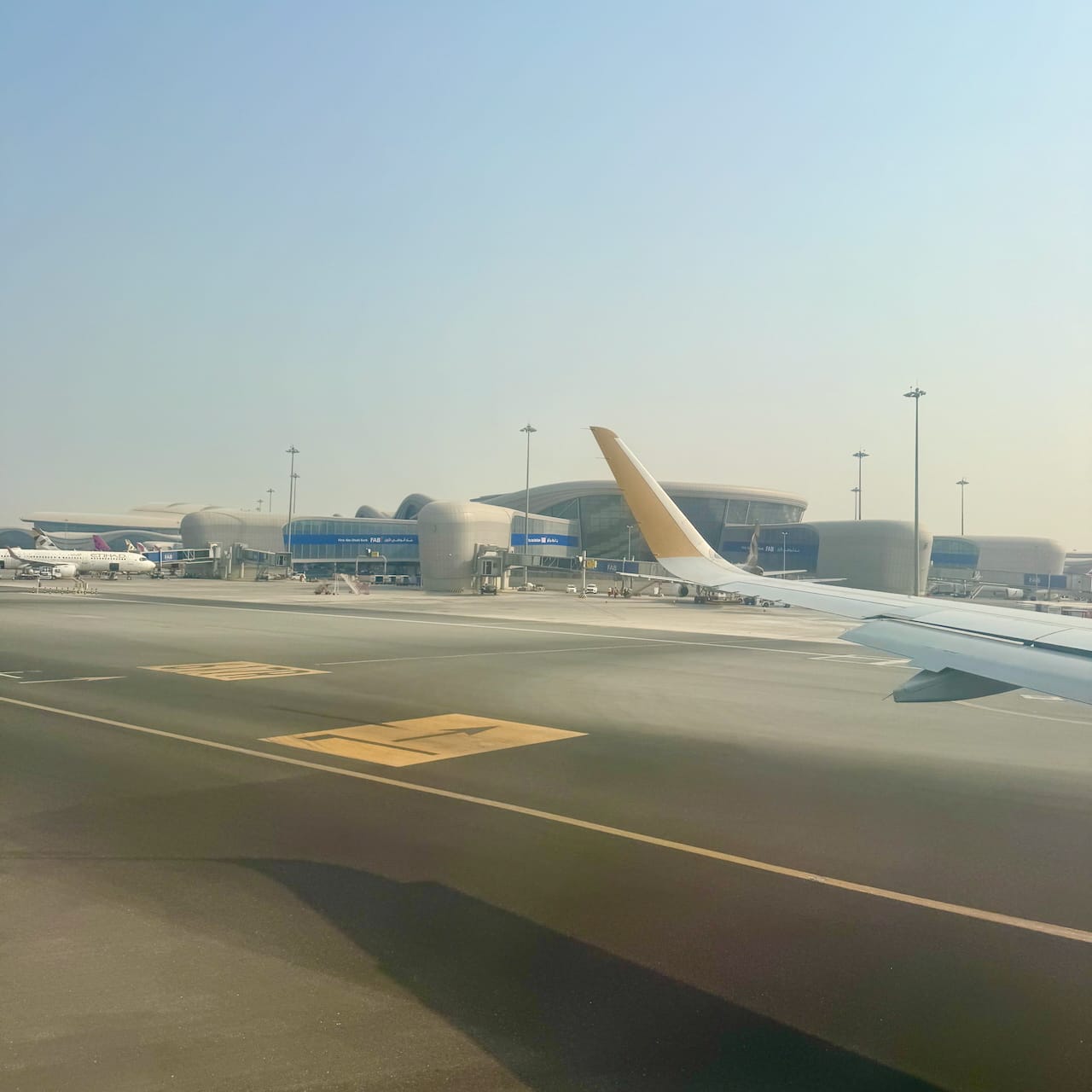Travel delay survival guide: Lessons from a chaotic trip home
Missed flights, delays, and chaos—travel rarely goes to plan. Here's how I handled a 3-leg flight disaster (and what I learned about staying calm, prepared, and even getting compensated).
A few weeks ago, I traveled to Phuket for Doist Connect, our yearly company retreat. After over eight years at Doist, I’ve attended several memorable retreats, including the team offsite to Budapest. Long flights to places like Phuket, often with multiple connections, present unique challenges and risks. Surprisingly, this journey went very smoothly. I even wondered if I was tempting fate by thinking, "Maybe this time everything will go right".
Then came the return trip. 😳
Out of the three flights I had to catch to get home, the very first one was delayed. Not just delayed—we boarded the aircraft on time, sat down, stashed our bags, and then waited. And waited. For four hours. Inside the plane. No explanations, no updates, just the hum of recycled air and the quiet bubbling of collective frustration.
Eventually, we took off and landed in Abu Dhabi after a smooth six-hour flight. But by then, my connecting flight to Athens had long departed. I was rebooked on a much later flight, which meant I also missed my final leg to Rhodes. Since that last flight was booked separately with a different airline, I had to buy a new ticket. And just like that, what was supposed to be a predictable journey turned into a game of travel Tetris.


Some views lift your spirit. Others remind you you’ve been parked on the tarmac for four hours. Travel likes to keep you grounded—literally.
Was it annoying? Yes. Exhausting? Very. But it could have been worse. I didn’t lose any luggage, the aircraft didn’t have any mechanical issues, and, most importantly, I was traveling alone—no kids to entertain or family logistics to juggle. Plus, since it was the return trip, I didn’t have to worry about rebooking accommodation or car rentals. So while my body was drained, my brain was relatively at peace.
Still, experiences like this serve as a strong reminder that when travel plans go wrong, your mindset and preparation make all the difference. Here’s what I’ve learned.
Be organized and proactive
I've written before about how I plan my trips, including a free travel planning template that I use religiously for long trips. Whether you use a digital tool like Craft (my go-to) or prefer a good old-fashioned folder, having all your travel details in one place is key. Craft also works offline, which makes it ideal for travel situations where Wi-Fi is unreliable or nonexistent. Flights, hotel reservations, backup options, insurance policies—the more you have on hand, the less you'll panic when things shift.
Being based in Europe means most of my travel falls under the perks of the EU. But once I cross into non-EU territory, the stakes go up. Roaming fees, unfamiliar insurance networks, and inconsistent infrastructure mean one small hiccup can have big consequences. Having proper travel insurance becomes especially important in these cases—it's your safety net for medical emergencies, lost luggage, or trip cancellations when you’re far from home.
My advice? Don’t cheap out on accommodation unless you’re absolutely sure of your plans. A few extra euros can buy you flexibility (like a free cancellation policy or a 24-hour check-in desk), which becomes invaluable when your itinerary gets scrambled. It also helps to have a "just in case" backup accommodation saved in your notes.
Don’t underestimate the Domino Effect
The thing about travel is that it doesn’t take much to unravel an entire day. A 15-minute delay might not sound like a big deal, but if you're dealing with a tight layover, that small delay can snowball into missed connections and extra costs.
Here are a few hard-learned lessons:
- Always leave buffer time between flights. One hour is never enough unless you're teleporting between gates.
- Book flights under the same airline (or airline alliance) when possible. It increases the chances they'll help you when things go wrong.
- Be cautious with low-cost carriers. They rarely accommodate missed connections, and support is often nonexistent.
Basically: don’t tempt fate. Give yourself breathing room, especially on international or multi-leg trips.
Be calm and patient
As much as I love traveling, I can’t recall a single trip where everything unfolded exactly as planned. The good news? Most hiccups are minor. The bad news? Even small hiccups can test your patience.


Everything was smooth, the seat was spotless, and I was blissfully unaware of what was coming.
You might encounter rude airline staff, an overbooked flight, or someone chewing loudly next to you for 10 straight hours. None of it will improve if you lose your cool.
Stay polite. Be firm if needed, but don’t let the chaos get to you. Flight attendants and airport staff have limited power, and your real shot at resolving anything will come later, through support tickets and claim forms.
Also, nobody wants to be the person yelling at gate C34. Nobody.
Build your case for flight compensation and refunds
When things go sideways, your phone becomes your best ally. Use it to:
- Take photos of delay boards or boarding passes
- Record timestamps (especially if your flight leaves late)
- Screenshot any app notifications or rebooking confirmations
You don’t need to be sneaky or confrontational—just document. This information can be useful when filing a claim.
If you're flying into or out of the EU, you're covered by EU Regulation 261/2004, which often entitles you to compensation of up to €600 for delays of 3+ hours, unless the airline can prove "extraordinary circumstances". Understanding your rights under airline compensation rules can make a significant difference when seeking a refund for a delayed flight or rebooking support.
Check your airline’s policies, too. You might be eligible for:
- Meal vouchers during long delays
- Hotel accommodation for overnight layovers
- Ground transportation
- Partial or full refunds, depending on how much of your journey was completed
Technology is your travel sidekick
A few apps that have saved my skin more than once:
- Flighty: Real-time flight tracking that’s way better than what airlines provide.
- Airline apps: Not great, but often necessary for check-ins or updates.
- Google Maps (offline mode): I love Apple Maps, but Google’s info density still wins for travel.
- ChatGPT: Yes, I’ve used it to draft complaint letters and find alternate routes.
- Screenshots & PDFs: Always save confirmations offline. You never know when the Wi-Fi will vanish.
And don’t forget the basics:
- A power bank and a reliable travel charger can be your lifeline during long delays or overnight layovers.
- A physical credit or debit card is essential, especially in places where mobile payments aren’t accepted or your phone dies unexpectedly.
When to laugh about it
Travel never goes 100% according to plan—and that’s okay. The missed connections, delayed bags, and unexpected hotel stays? They’re often the stories you tell years later.
So laugh. Not necessarily during the delay (unless you’re emotionally bulletproof), but definitely after. Flexibility, patience, and a good sense of humor are your best travel companions.
A few parting truths:
- Never trust a 40-minute layover.
- Always carry a toothbrush and a clean pair of underwear.
- Airports are emotional pressure cookers.
- There’s no such thing as over-preparing.
The only guarantee in travel is that something will eventually go off-script. But if you’re organized, calm, and a little tech-savvy, you’ll handle it like a pro—and maybe even come home with a story worth telling.